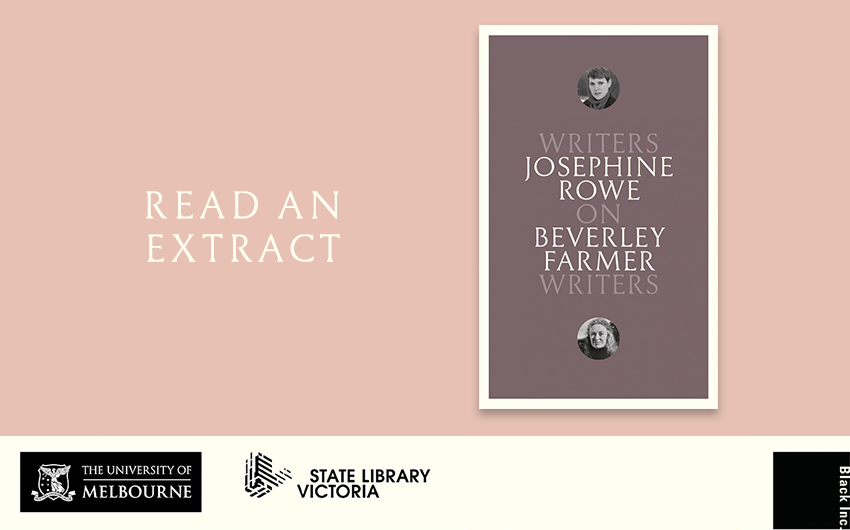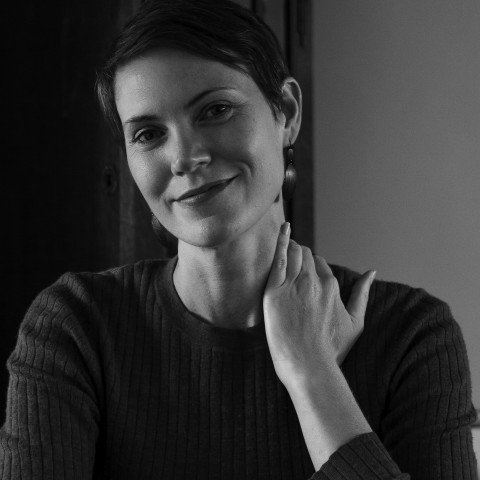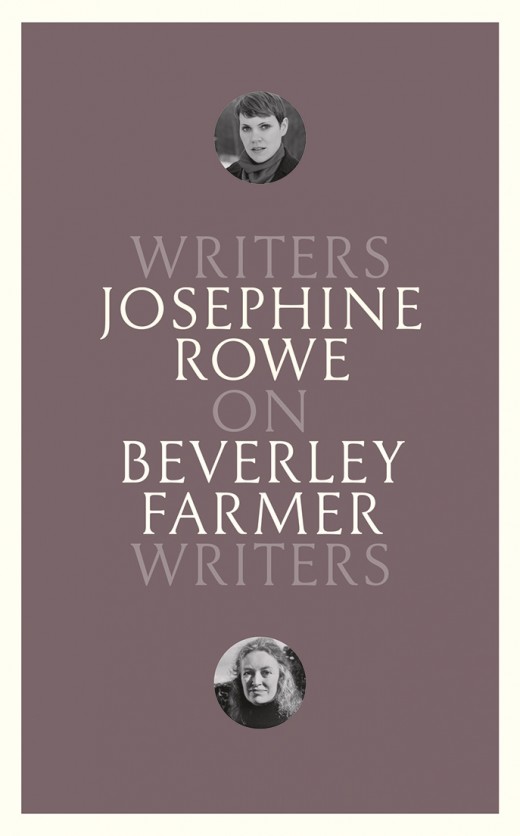News

News >
Read an extract: On Beverley Farmer
While staying in a writer’s residence in Rome, Josephine Rowe picked up a book by Beverley Farmer, who had stayed in the same residence years earlier. Read an extract from the upcoming addition to the Writers on Writers series.
In Bertie’s library, several shelves had been set aside to hold the works of past fellows. Mythological references in the titles, so many stone faces staring out from dust jackets to signify: here we are in the Old World.
The cover of The Bone House shows one such face: an angel or death mask in close-up, wide-grained film of weathered marble. I took the book off the shelf and looked at the face and slotted it back again, several times, before finally plunging in.
It begins with a blade of light. As simple, as subtle, as that: clean winter sun shearing at the edge of a blind, sharpening in intensity before flaring into image, into meaning, like a revelatory moment in a Bergman film.
This humble phenomenon – of light transpiring to image – develops to full relevance at Farmer’s elemental pace across the book’s three nonlinear essays. She casts back and forth across millennia, in and out of myth: from the disparate origins of optics and everything indebted to them; to the first lenses and the findings of the first astronomers; to how we have learned to see, and our efforts to reproduce what has been seen. The epic discoveries and setbacks and losses through the light and dark ages of civilisations: time marked by menhirs and monoliths, stones that have become the fossils of their meanings; icons of reindeer graven under a cliff to call living herds to its edge; the fall of the lighthouse at Pharos; the burning of the Great Library of Alexandria and the burning of heretics; the post-Krakatoa skies of Europe, and the artists whose palettes, along with their inner weather, reflected them. Van Gogh on yellow, Goethe on red, Goethe on blue. The black bird that shadowed everything Edvard Munch saw, following a haemorrhage in his right eye.
Farmer experienced a similar shadowing (musca volitans) and feared, with haunting prescience, that she would one day lose her sight. This could be taken as the underlying impetus for these essays and their encyclopaedic, sometimes overwhelming breadth: the urgency to document, record, cache. The act and the art of looking, whether as writer or photographer or artist or scientist or mystic. The quixotic business of transposing this witness into language. The image hoard of one mind.
Our first job, Farmer reminds, is noticing: The photograph has its full being in the instant of exposure. The rest is aftermath. The text is interleaved with her own photographs – prints she laboured over in a makeshift darkroom in a borrowed shed near her home in Point Lonsdale, sealed in the light-tight, chemical interior, the sleepy sounds of hens on the other side of the wall.
There are also the embedded passages from a never-finished novel, fiction that blooms as lichen between the scrubbed bones of fact: the death of a man by a roadside in the Greek port city of Thessaloniki, and the shockwaves it casts to coastal Australia. I see now that the story will never unfold, Farmer cedes, after a point, though it becomes all the more indelible for that. The meaning goes on growing, like desire, like memory, in the dark.
The palimpsestic nature of The Bone House, and the mode of observation it encourages, was particularly potent in a city like Rome. Her words asked patience, but in turn bestowed the same, sharpening appreciation for both the immediate, sensory world and the histories underlain. I became enthralled by the acuity of her attention, copying passages into my notebook, gleaned from her careful gleaning:
Low tide and a waveline of jellyfish like ice on the thaw, clearer than water, so clear even the sand is alight …
The early photographers kept a cat in the studio to act as a light meter, going by the subtle swell and shrink of its changing eyes in the changing light. How did they keep it awake?
And I went out into the Eternal City each day feeling equipped with some indefinable new apparatus for appreciating the hereto overlooked or undervalued.
Much within these essays is deeply personal – observations and desires, memories and dreams and the gauzy territory between the two. As much again, garnered, stored, housed:
A stored image can broadcast itself when conditions are favourable, taking form in words, in ink and paint, film, clay, stone. Images are seeds. They have latency and the power to endure. They are like stored shadows burnt on to film for a fraction of a second, decades ago, the long lost negative …
The Bone House, published in 2005, is either a decade’s work or a lifetime’s, depending on how you look at it. It is the distillation of an expansive mind that seeks to delve and delve. Her tone is never didactic – rather, discursive, exploratory, delighted, unjaded, alive. To read more than a few pages at a stretch is to travel a long way from where you set out. Sometimes to travel so far as to lose the view of the mountain, only to be brought back via an unfamiliar face of it.
For a little more than a week, I read – I travelled through – very slowly. The book was there for mornings, the days drawing their shape and tone from as few as half a dozen pages. Or it was a place to come for refuge, panhandling at four a.m., unable to sleep, tilting the book towards the cheap lamp to ask, what lasts?
Relics, memorials, the tide’s leavings and ours, humanity’s, so few, bones and driftwood, shells, crab casts and scrawls on the sand that were wave traces … Standing stones and rune stones, crosses, middens, ruins, shards and shreds as haphazard and rifted with meaning as the elements of a dream.
Then she died. On the other side of the world. And the news of it affected me in a way that seemed unearned. A surreal plunge of loneliness, loss. A sensation like that of phantom stair – the vertiginous pitch that comes from planting a foot down somewhere you’d imagined was solid, continuous.
I had been making my way through the intricate inner logic of the essays with the sense of the author as an abiding entity, existing both within and around the text. With her death, the ground shifted. There were still the works that came before, yes. And a final book of stories, printed just in time for her to see it. But beyond that: one of her ocean-undermined escarpments, shearing off into vast sea.
This far, and no further. A familiar refrain of Farmer’s throughout her writing life.
For reasons that remain elusive, I could not, at that time, finish reading the book.
The Writers on Writers series is published by Black Inc. in association with the University of Melbourne and State Library Victoria. On Beverley Farmer is coming soon – join us for the online launch with Readings.
Share this post
About the author
Josephine Rowe is the author of three story collections and two novels, including A Loving, Faithful Animal, longlisted for the 2017 Miles Franklin Award and selected as a New York Times Editors' Choice. She has twice been named a Sydney Morning Herald Best Young Australian Novelist, and Here Until August was shortlisted for the 2020 Stella Prize. She currently lives in coastal Victoria.
More about Josephine Rowe




